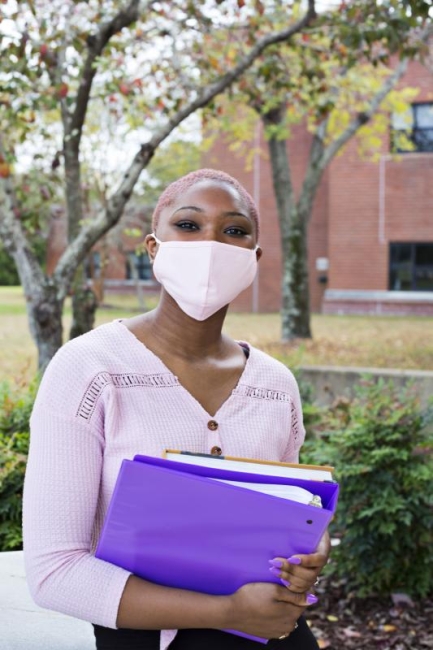You have /5 articles left.
Sign up for a free account or log in.

ktaylorg/E+/getty images
Too much anxiety has passed throughout colleges and universities for us to retreat to old norms of surrounding graduate students in a cocoon of field silos and platitudes (but no plots) related to their career education. As we prepare to return to more in-person interaction in the coming months, let us acknowledge the emotional costs paid by our trainees and students who represent our academic and, ultimately, economic future. A successful future, which also means an emotionally healthy one, includes resilience, confidence and social connections -- the very elements often missing right now in our institutions.
For example, graduate students who are physically located in Europe and Asia attend my virtual career education and professional development events. My New York-centric and Eastern clock states that the time is 2 p.m. But for the Ph.D. student residing in Berlin, the hour is 7 p.m. And for her counterpart in Mumbai, the time is 11 p.m.
Can you imagine being the sleep-deprived outlier in your own home? The family households operate on local time, while the students work in time zones related to educational and career goals made before the global disconnection of in-person teaching and research.
Graduate students still on our campuses face another type of challenge. Health and safety protocols for COVID -- social distance, remote work and daily attentiveness to interpersonal connections -- have generated fear and, in more than a few instances, a mental health crisis.
Not every graduate student needs a therapist, and some individuals have creatively thrived during the pandemic. But as I listen to the students participating in my virtual graduate career planning class and in large-scale events with graduate students from both master's-level and Ph.D. programs, these words most often crop up: stress, uncertainty, derailed, lost.
COVID forces all of us -- students, faculty members and staff -- to re-evaluate promises and processes associated with a graduate degree. Ph.D. students have witnessed massive upheaval, with labs shut down and research canceled. Well acquainted with the challenges of the academic job market, they have watched its disruption and now ask questions about the viability of a teaching and research career. They speak of a highly educated yet limited career future.
The shorter time-to-degree experiences of master’s-level students makes the statement of a lost future even more intense. This past year translated into a cycle of debt to obtain a degree, missed paychecks due to business closures and swift and growing limitations in the types of available work.
And when the international students speak about F-1 visa status, OPT/CPT and the job market, the emotional stress comes right through the Wi-Fi connection. They tell me their future has disappeared.
If we add intersections of race and gender with any of the above -- Ph.D., master’s or F-1 -- the anxiety increases by a factor of 10. For example, a highly productive Ph.D. student in STEM leaves a degree program. Why? COVID isolation removed the emotional bandwidth to manage tensions between a Latino heritage and the community surrounding the university. Despite affiliation with my university’s support services, peers and even a sympathetic grad adviser, the COVID environment prompted a young researcher to leave a degree program.
Maslow’s hierarchy of needs is no longer a pyramid with graduate students situated in the esteem and self-actualization regions where high-achieving individuals usually find themselves. Safety, security, rest -- the basic physiological needs -- are in short supply. A robust round of career coaching and uplifting visuals will not solve this problem. My role is to show multiple pathways to essential skills for the future of work -- a future that includes knowledge from advanced degrees, microcredentials and experiential education to supplement classroom knowledge.
Career coaches can point to issues like trends in job descriptions requiring candidates to possess active listening skills and the use of artificial intelligence in tasks previously associated with in-person contact. We are not the decision makers in charge of the courses that our students take. We are, however, influential sources of data and trends. Here are a few suggestions for academic partners responsible for the educational well-being and persistence of graduate students, especially the students enrolled in humanities and social science programs.
Field Silos Mean Isolation
If humanities and social science graduate degree programs continue to treat experiential learning as an option, not an essential component, then STEM program students will continue to have an advantage over those in other fields through their development of two career competencies: communication and collaboration. For example, computer science Ph.D. students finish their education with a history of projects requiring teamwork and perhaps even a case study for an organization. Technology and society graduate students might end up in an adviser-approved consulting gig for a county agency.
STEM students learn how to reskill and upskill from the first day of class until commencement. They leave the university assuming advances will occur in technology and perhaps they will even profit from them. Experiential education places STEM grad students in work environments and professional settings requiring a growth mind-set, with the expectation of improvement over time.
In contrast, graduate students in the social sciences work alone or on highly individual projects. But imagine if graduate program directors had approached the pandemic as a real-time field seminar requiring the use of the collective energies of students not just in science but also in the social sciences and humanities. They could have, for instance, put those humanists and social scientists into activity similar to models from Vertically Integrated Projects that focus on scholarship and practical solutions.
The benefits not only to the students but to the public could have been significant. Supported by social science insights about health-care disparities and underserved communities, health education and COVID vaccine distribution might have been more equitable. Including humanities practitioners would have alerted scientists to interior lives driving decisions in vulnerable populations. Consider, as just one case in point, how state officials in West Virginia looked at a state map and realized that the best way to vaccinate residents of the rural Mountain State was to rely on independently owned pharmacies paired with area nursing homes.
Various sources tell us that science is much too important to be left to the scientists. And America’s recent experiences with COVID-19 speak more to a dearth of humanistic knowledge than anything else.
A Mission, Not a Timeline
We should give our graduate students a mission instead of a timeline, especially those students enrolling in master’s programs in humanities. Viewing an M.A. degree as an avenue to yet another degree is just one more step on a timeline. But an M.A. degree program requiring completion of a service-learning project or semester-long consulting work for a community organization puts a student in contact with more people and helps them develop new skills. And that can only help in their career advancement.
Experiential education alone will not resolve the emotional distress within populations of graduate students. But if we recreate graduate education to include advanced degree programs that actively support the pursuit of communication outside a specialty, interdisciplinary collaboration and public engagement, then all graduate students -- including the would-be historians -- might see many more options for the future.




